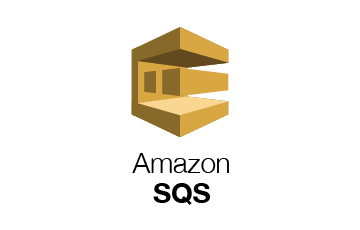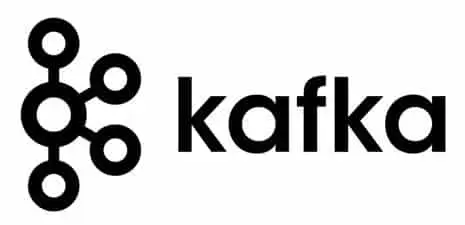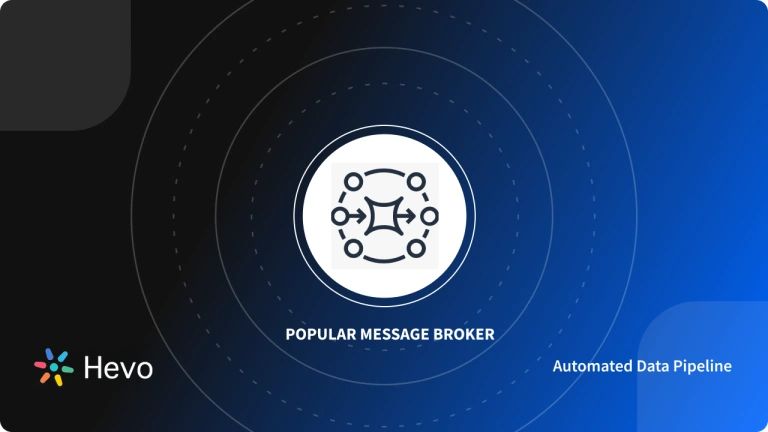Modern applications are becoming increasingly complex. Time-consuming and resource-intensive operations, communication between multiple services, and processing large amounts of data are just a few of the issues that developers face. Fortunately, there are solutions that can help to alleviate some of these difficulties. One of them is a Message Broker. A Message Broker is a software that allows services and applications to communicate with one another through the use of messages. The structure of the messages is formally defined and independent of the services that send to them.
In this article, you will gain information about Message Brokers. You will also gain a holistic understanding of basic concepts of Message Brokers, models of Message Brokers, comparison between Message Brokers vs APIs, best use cases of Message Brokers, top Message Broker tools, advantages and disadvantages of Message Brokers. Read along to find out in-depth information about Message Brokers.
Table of Contents
What is a Message Broker?
A Message Broker is a software that allows applications, systems, and services to communicate and exchange data. This is accomplished by the message broker by translating messages between formal messaging protocols. This enables interdependent services to “talk” directly to one another, even if they are written in different languages or run on different platforms.
Message brokers are software modules that are included in Messaging Middleware or Message-Oriented Middleware (MOM) solutions. This type of middleware provides developers with a standardized method of handling data flow between an application’s components, allowing them to focus on the application’s core logic. It can function as a distributed communications layer, allowing applications on different platforms to communicate with one another.
Message Brokers are capable of validating, storing, routing, and delivering messages to their intended destinations. They act as go-betweens for other applications, allowing senders to send messages without knowing where the receivers are, whether they are active, or how many there are. This makes it easier to decouple processes and services within systems.
Hevo Data, a No-code Data Pipeline, helps integrate data from various databases with 150+ other sources and load it in a data warehouse of your choice. It provides a consistent & reliable solution to manage data in real-time and always has analysis-ready data in your desired destination. Check out what makes Hevo amazing:
- Load Events in Batches: Events can be loaded in batches in certain data warehouses.
- Easy Integration: Connect and migrate data without any coding.
- Auto-Schema Mapping: Automatically map schemas to ensure smooth data transfer.
- In-Built Transformations: Transform your data on the fly with Hevo’s powerful transformation capabilities.
Basic Concepts of Message Brokers
Some of the basic terms used in Message Brokers are as follows:
- Producer: This is an endpoint that sends any type of data to be stored and distributed by the message broker.
- Consumer: It is an endpoint that requests data from the message broker (messages).
- Queue: This is a data type used by the message broker to store messages using FIFO logic (First in First out).
- Exchanger: A logical configuration or even entity that sits on top of the queues and instructs the message broker to create some sort of group to which consumers/producers can write or listen in order to send/receive messages.
What are the Models of Message Brokers?
Message Brokers offer two basic message distribution patterns or messaging styles:
1) Point-to-Point Messaging
This is the distribution pattern used in message queues where the sender and receiver have a one-to-one relationship. Each message in the queue is sent to and consumed by a single recipient. When a message must be acted on only once, point-to-point messaging is used.
Payroll and financial transaction processing are two examples of applications for this distribution pattern. Both senders and receivers in these systems require assurance that each payment will be sent only once.
2) Publish/Subscribe Messaging
In this message distribution pattern, also known as “pub/sub,” the message producer publishes each message to a topic, and multiple message consumers subscribe to topics from which they want to receive messages. All messages posted to a topic are distributed to all applications that have subscribed to it. This is a broadcast-style distribution method in which the message’s publisher and consumers have a one-to-many relationship.
If an airline, for example, circulated updates about the landing times or delay status of its flights, multiple parties could benefit from the information, including ground crews performing aircraft maintenance and refuelling, baggage handlers, flight attendants, and pilots preparing for the plane’s next trip, and operators of visual displays informing the public. In this case, a pub/sub messaging style would be appropriate.
3) Hybrid Models
Hybrid models do exist in practice. For example, when multiple systems require a copy of a message while also requiring permanence and persistence from message loss. Messages must be distributed similarly to topics in these cases. Every message is routed to the system that is most interested in it. These recipients have the ability to specify which other consumers will receive the message.
Message Brokers in Cloud Architectures
In cloud-native architectures, message brokers serve as a backbone for efficient communication between microservices. These applications consist of independent, reusable microservices that can be updated or scaled without disrupting the entire system.
Message brokers enable secure, reliable, and asynchronous communication between these microservices, ensuring smooth data exchange. They are particularly valuable in:
- Hybrid Cloud Environments: Facilitating communication between on-premises systems and cloud components.
- Multicloud Setups: Bridging workloads across different cloud platforms.
- Serverless Computing: Supporting on-demand services by queuing and distributing requests efficiently.
Message Brokers vs. APIs
| Aspect | REST APIs | Message Brokers |
| Communication | Synchronous, requires an immediate response. | Asynchronous, no need to wait for a response. |
| Protocol | Uses HTTP for request/response communication. | Uses messaging protocols like AMQP, MQTT, or proprietary protocols. |
| Fault Tolerance | Limited; the sending service may be blocked if the client is down. | High; messages can be stored and delivered later when the client is ready. |
| Scalability | Requires additional configuration for scaling. | Easily supports scaling with pub/sub patterns. |
| State Management | Stateless; each request must carry all the information needed. | Tracks consumer states, improving reliability and delivery. |
| Use Case | Best for synchronous tasks like fetching or updating data. | Ideal for asynchronous tasks like event-driven communication. |
- Representational State Transfer (REST) refers to a set of principles and constraints that developers can use when creating web services. REST APIs are commonly used for inter-microservice communication. Any services that follow them will be able to communicate using a standard set of uniform shared stateless operators and requests.
- REST APIs use Hypertext Transfer Protocol (HTTP) to communicate. HTTP is a request/response protocol, however, so it is best used in situations that call for a synchronous request/reply. This means that services making requests via REST APIs must be designed to expect an immediate response. If the client receiving the response is down, the sending service will be blocked while it awaits the reply. Failover and error handling logic should be built into both services.
- Whereas, Message brokers enable asynchronous communications between services so that the sending service need not wait for the receiving service’s reply. This improves fault tolerance and resiliency in the systems in which they’re employed. In addition, the use of message brokers makes it easier to scale systems since a pub/sub messaging pattern can readily support changing numbers of services. Message brokers also keep track of consumers’ states.
Differences between Message Brokers & Message Queues
| Feature | Message Brokers | Message Queues |
| Definition | Routes messages between services. | Stores and manages messages for sending and receiving. |
| Role | Acts as an intermediary for message exchange. | Stores and forwards messages from producers to consumers. |
| Communication Model | Supports pub-sub, point-to-point, and other patterns. | Primarily supports point-to-point messaging. |
| Scalability | Scales horizontally across multiple instances. | Scales vertically by adding more resources. |
| Message Persistence | Typically offers persistent message storage. | May or may not persist messages. |
| Message Transformation | Often supports transformation and enrichment of messages. | Limited support for message transformation. |
| Protocol Support | Supports multiple protocols (e.g., AMQP, MQTT). | Typically supports one protocol (e.g., AMQP, JMS). |
| Flexibility | More flexible in message routing and delivery. | Less flexible, simpler queuing model. |
| Complexity | More complex with advanced features. | Simpler and easier to manage. |
| Examples | Apache Kafka, RabbitMQ, ActiveMQ. | Amazon SQS, IBM MQ, Microsoft Azure Service Bus. |
Message Brokers vs. Event Streaming Platforms vs. ESB (Enterprise Service Bus)
| Feature | Message Brokers | Event Streaming Platforms | ESB (Enterprise Service Bus) |
| Primary Function | Facilitates communication between applications by sending and receiving messages. | Streams large volumes of event data in real time for analytics or processing. | Connects multiple systems and applications using a centralized integration hub. |
| Complexity | Lightweight and simple to set up. | Moderately complex due to handling real-time data streams. | High complexity, involving orchestration and protocol translations. |
| Scalability | Easy to scale for small to medium workloads. | Designed to handle massive real-time data at scale. | Difficult to scale due to centralized architecture. |
| Use Cases | Microservices, distributed systems, interservice communication. | Real-time analytics, event-driven architecture, log processing. | Legacy systems, enterprises with diverse protocols needing integration. |
| Maintenance | Low maintenance and cost-effective. | Requires monitoring for high-volume data. | High maintenance and expensive to operate. |
| Example Technologies | RabbitMQ, Apache ActiveMQ, Redis. | Apache Kafka, Amazon Kinesis, Google Pub/Sub. | MuleSoft, TIBCO, IBM Integration Bus. |
Best Use Cases of Message Brokers
Message brokers can be used to address a wide range of business needs across industries and in a variety of enterprise computing environments.
Message brokers are often employed in the following ways:
- E-commerce order processing and fulfillment: If you do business online, the reliability of your website and e-commerce platform determines the strength of your brand’s reputation. Message brokers are a natural choice for processing online orders because of their ability to improve fault tolerance and ensure that messages are consumed only once.
- Financial transactions and payment processing: It is critical to ensure that payments are only sent once. Using a message broker to handle the data from these transactions ensures that payment information is not lost or accidentally duplicated, provides proof of receipt, and allows systems to communicate reliably even when intermediary networks are unavailable.
- Protecting highly sensitive data at rest and in transit: Protecting highly sensitive data at rest and in transit: If your industry is highly regulated or your company faces significant security risks, choose a messaging solution that supports end-to-end encryption.
Best Message Broker Tools
Some of the best Message Broker Tools are as follows:
1) Amazon SNS

Amazon Simple Notification Service (SNS) is a Cloud service that coordinates the delivery of push notifications from software applications to subscribed endpoints and clients. It allows you to send notifications to your customers directly. It can be used to send individual messages as well as in a publish-subscribe pattern. It’s a component of Amazon Web Services. One of its primary benefits is its low-cost infrastructure. It also scales the workload within your application automatically.
2) Amazon SQS

Amazon Simple Queue Service (SQS) is a fully managed message queuing service that enables the decoupling and scaling of microservices, distributed systems, and serverless applications. It can also be automatically scaled to the size of the workload. Amazon SQS uses a pull mechanism, which means that receivers must pull messages from SQS queues on their own.
SQS removes the complexity and overhead associated with managing and operating message-oriented middleware, allowing developers to concentrate on differentiating their work. SQS allows you to send, store, and receive messages between software components at any volume without losing messages or requiring the availability of other services.
3) Redis

Redis is an in-memory data store that can function as a high-performance key-value store or a message broker. It is a data structure store that is kept in memory. As a result, messages are not guaranteed to be durable there. Strings, lists, maps, sets, sorted sets, hyper logs, bitmaps, and spatial indexes are among the abstract data structures supported by Redis. Redis is fast and lightweight, which makes it a favorite among many developers around the world.
4) RabbitMQ
RabbitMQ is the most widely used and popular open-source best message broker software — a messaging intermediary. It is written in Erlang and is supported by the Pivotal Software Foundation. It provides a common platform and a secure location for your applications to send and receive messages.
It can handle advanced and complex routing scenarios. It offers four types of exchanges – it is a component of the broker that routes messages to appropriate queues. Messages are thus sent to exchanges first, rather than queues, in the case of RabbitMQ. Its characteristics include performance, reliability, high availability, clustering, and federation, among others. RabbitMQ comes with a simple management interface that allows you to monitor and control your message broker.
5) Apache Kafka

Kafka is a robust Queue Broker and an Open Source Messaging system. It is a distributed event streaming platform that can handle a high volume of messages. Message broker Kafka messages are stored on disc and allow you to seamlessly send messages from one point to another. Apache message queue messages are replicated across the entire Kafka cluster to prevent unwanted operations such as data loss from occurring. The Kafka messaging platform was designed to handle real-time event streaming, pipelining, and data replaying for fast, scalable operations.
Advantages of using Message Brokers
Some of the advantages of using Message Brokers are as follows:
- Regardless of whether or not the consumer is active, the producer can send messages. It only requires a message broker to be operational. The consumer is no exception.
- Message Brokers added asynchronous processing which improved system performance. Tasks that require a lot of time can be divided into different processes. This will improve the user experience by speeding up your application.
- Message Brokers boost reliability by ensuring the transmission of messages. Message brokers provide a mechanism for redelivery. In the event of a consumer failure, the message can be re-delivered immediately or after a predetermined period of time. It also allows for the routing of undeliverable messages, known as a dead-letter mechanism.
Disadvantages of using Message Brokers
The use of the message broker involves asynchronous processing. Therefore, the disadvantages of using it are related to the challenges we face by using asynchronous calls.
- System complexity increases: Adding a message broker to your system adds a new component to your overall system architecture. As a result, there are additional considerations to be made, such as network maintenance between components or security concerns. In addition, a new issue with eventual consistency arises. Until the messages are propagated and processed, some components may not have up-to-date data.
- Debugging can be difficult: Assume you have multiple async stages of processing a single request using the message broker. You sent something but did not receive a response. Finding the root cause of a failure can be difficult because each service has its own logs. Along with implementing systems that use messages, keep in mind to include some message tracing capabilities.
- Initial steep learning curve: Message brokers are not as simple as they appear. They have a plethora of configuration and setup options. The size of queues and messages, queue behaviour, delivery settings, and message TTL are just a few of the many options available.
Best Practices for Message Brokers
- Choose Clear Messaging Patterns
Use well-defined messaging patterns like publish-subscribe or point-to-point for efficient communication. Ensure the pattern aligns with your application needs, such as event-driven architecture or data pipelines. - Design Proper Message Schemas
Structure message schemas clearly to avoid misinterpretation. Use lightweight formats like JSON or Protobuf for better compatibility and performance. - Optimize Message Size
Keep messages small, ideally under 10 MB, to reduce network overhead and improve performance. Avoid sending unnecessary data to optimize resource usage. - Implement Robust Error Handling
Set up retry mechanisms with exponential backoff to handle transient failures. Log and track errors to ensure reliable message delivery and system resilience. - Monitor and Set Alerts
Continuously monitor broker performance, including queue depths and consumer lag. Use alerts for anomalies like transmission failures to quickly identify and resolve issues.
Conclusion
In this article, you have learned about Message Brokers. This article also provided information on basic concepts of Message Brokers, models of Message Brokers, comparison between Message Brokers vs APIs, best use cases of Message Brokers, top Message Broker tools, advantages and disadvantages of Message Brokers.
Hevo, a no-code data pipeline platform, simplifies data integration by automating ETL processes, making it easy to move data across multiple platforms efficiently. Hevo also allows the integration of data from non-native sources using Hevo’s in-built REST API & Webhooks Connector. You can then focus on your key business needs and perform insightful analysis using BI tools. Try a 14-day free trial and experience the feature-rich Hevo suite firsthand. Also, check out our unbeatable pricing to choose the best plan for your organization.
FAQs
1. What is the role of a message broker in a distributed system?
Message brokers in distributed systems facilitate communication by forwarding messages between services or components. They ensure asynchronous message delivery, decouple producers and consumers, enabling better scalability and fault tolerance.
2. What is the fastest message broker?
The fastest message broker varies with use case and system requirements, but Kafka is often one of the fastest due to its high throughput and low latency. Other fast brokers include NATS and RabbitMQ, depending on specific performance needs.
3. Is message broker an API?
No, a message broker is not an API. A message broker is middleware that enables the integration of different systems by routing and managing messages, whereas an API is a description of how software components can interact.











